Lies about soy - Le bugie sulla soia
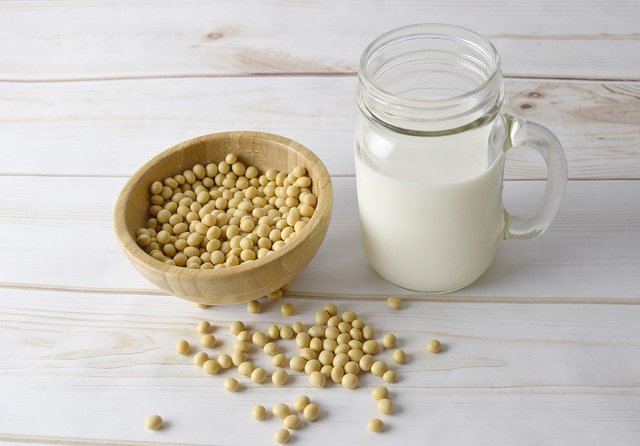
Imagine CC0 Creative Commons - Source
What is soy?
The soy is a herbaceous plant that is part of the legume family and therefore is currently used as a base for many vegetarian or vegan products in the form of flour or "milk".
Historically, the consumption of soy has been relegated to the fermented form, which being raw has numerous anti-nutrient or even toxic qualities that we will analyze one by one.
Soy is rich in isoflavones, goitrogen substances that mimic the action of hormones such as estrogen and that in recent studies have been shown to interact and modify the proper functioning of the endocrine system, causing fertility problems, thyroid diseases, and liver diseases.
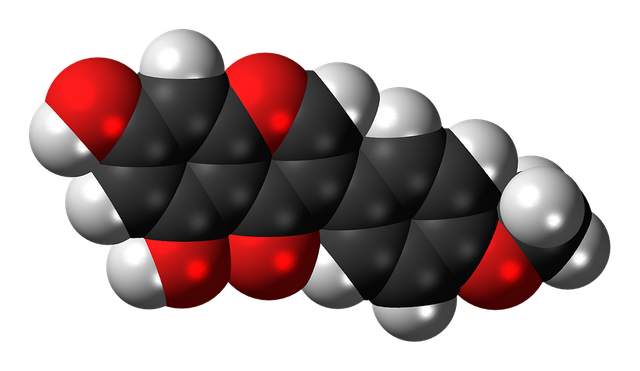
Imagine CC0 Creative Commons - Source
Example of isoflavones.
Another component highly contained in soy are protease inhibitors, enzymes that are involved in the protein breakdown process and therefore in food digestion; moreover a consumption of soy processed at high temperatures would seem to determine the increase of homocysteine in the blood, increasing the risk of cardiopathies and of stroke in subjects with a diet low in vitamin B12, a molecule particularly present in products of animal nature and necessary for processing homocysteine. It is also known that the phytates present in the soy block the absorption of minerals, causing a lack of minerals such as calcium, magnesium, copper, iron, and zinc.
A large part of these unpleasant effects are mitigated through the fermentation process and that is why products like tempeh and miso are the most recommended soy forms.
Nowadays there are many high-tech processing techniques that aim to make the soy healthier: high-temperature processing, acid baths and solvent use, but the price to pay for these processes is certainly not zero.
The high-tech processes are usually left to leave toxic residues in the product or in the best case greatly reduce the nutritional value of the product: this is why, for example, the animals fed with soy flour need lysine supplements to grow in a normal way. According to what has been said up to now it is clear that soy should be consumed in moderation and that it is not the "Holy Grail" of health as it's said in many marketing campaigns.
As we like to remember: "it is the dose that makes the poison".
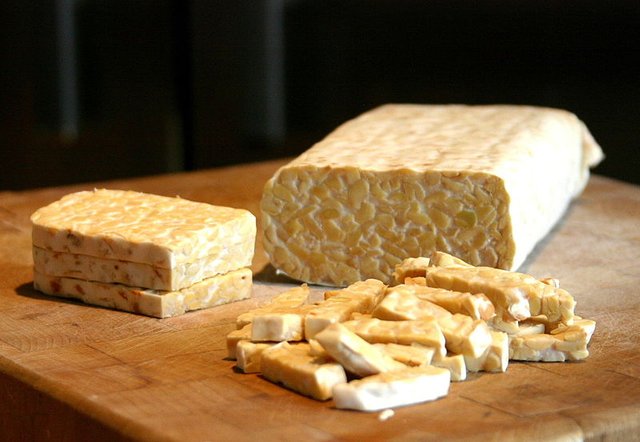
Imagine CC0 Creative Commons - Source
Economic point of view
Soy is experiencing one of the most flourishing periods in terms of sales, so much that Italy has started to produce it on a large scale (especially in Emilia Romagna) and to import it even from China. Many third world countries are among the main exporters of this legume so many feel a clear conscience to buy products based on soy, convinced to finance needy farmers, but the truth is another.
The greatest risk that those who cultivate this product runs is given by the phenomenon of volatility which, already in 2008, has deceived farmers all over the world. First of all, we consider an important factor: cultivating soy rather than corn is convenient, in terms of salable products, only if the price ratio between these two products is above a certain value. And currently it is not because of the changing grain prices. If US soybean is sold at over 500$/tonne and Italian soybean over 400€/tonne, the rapid rise in corn prices from 150€ to 250€/tonne in a few months has reduced the spread between corn and legume, bringing the relationship to a low value for the first time since August 2008.
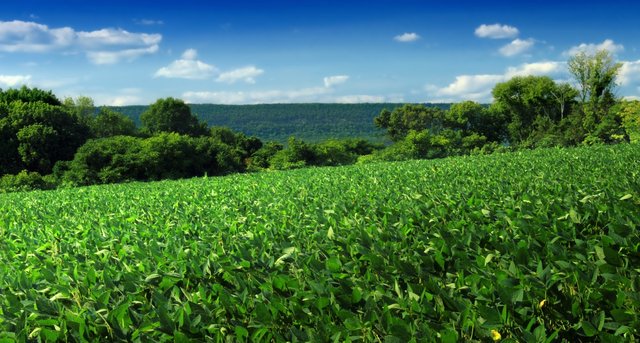
Imagine CC0 Creative Commons - Source
The solution to price volatility is only one: plan sales. The market for large crops, to which soy belongs, imposes prices at an international level, to which any farmer, whether American, Brazilian or Italian, must undergo. It is the big buyers who decide the prices of soy instead of farmers, and the latter, of course, are strongly intimidated by any unexpected events and possible speculations.
There is another fact to consider: cereals are fundamental in the diet of many third world populations and the increase in prices makes it impossible to provide food for the most, in addition intensive monocultures as well as depleting the soil and reducing the biodiversity of the territory, also translates to a reduction of land available for livestock farming of many populations in the southern hemisphere.

Immagine CC0 Creative Commons, si ringrazia @mrazura per il logo ITASTEM.
CLICK HERE AND VOTE FOR DAVINCI.WITNESS
References
- Zhang W, Liu X, Yang Z, Song H, Zhang Y, Jin Y (2018). Effect of soaking and temperature process on the volatile compounds in soymilk made by soymilk maker.
https://doi.org/10.1007/s13197-018-3072-7 - Galán MG, Drago SR (2014). Effects of soy protein and calcium levels on mineral bioaccessibility and protein digestibility from enteral formulas.
https://doi.org/10.1007/s11130-014-0432-y - Doerge DR, Chang HC (2001). Inactivation of thyroid peroxidase by soy isoflavones, in vitro and in vivo.
https://www.ncbi.nlm.nih.gov/pubmed/12270219 - Article by “The economist”.

Al netto delle attuali ricerche scientifiche pare che le uniche forme in cui la soia risulta un alimento sano siano il tempeh ed il miso.
Da qualche anno a questa parte, i supermercati sono stati invasi da prodotti a base di soia, propagandati come prodotti benefici e salutari. Ma è davvero così?

Immagine CC0 Creative Commons - Source
Cos’è la soia?
La soia è una pianta erbacea che fa parte della famiglia delle leguminose e, per tanto, è attualmente utilizzata come base per numerosi prodotti vegetariani o vegani in forma di farine o “latte”.
Storicamente il consumo di soia è stato relegato alla forma fermentata, che però, essendo cruda, possiede numerose qualità anti-nutrienti se non addirittura tossiche che andremo ad analizzare una ad una.
La soia è ricca in isoflavoni, sostanze gointrogene che mimano l’azione di ormoni quali ad esempio gli estrogeni e che in recenti studi si sono dimostrati interagire e modificare il corretto funzionamento del sistema endocrino, causando problemi di fertilità, malattie tiroidee e malattie epatiche.

Immagine CC0 Creative Commons - Source
Esempio di isoflavonoidi.
Un’altra componente altamente contenuta nella soia sono gli inibitori della proteasi, enzimi coinvolti nel processo di scomposizione delle proteine e quindi nella digestione degli alimenti; inoltre un consumo di soia lavorata ad alte temperature sembrerebbe determinare l’aumento di omocisteina nel sangue, collegato all’aumento di rischio di cardiopatie e di ictus in soggetti con una dieta povera di vitamina B12, una molecola particolarmente presente nei prodotti di natura animale e necessaria al processamento dell’omocisteina. E’ inoltre noto come i fitati presenti nella soia siano in grado di bloccare l’assorbimento di minerali, determinando una carenza di minerali come: calcio, magnesio, rame, ferro e zinco.
Gran parte di questi spiacevoli effetti vengono mitigati tramite il processo di fermentazione ed è per questo che prodotti come tempeh e miso sono le forme di soia più consigliate dagli esperti.
Al giorno d’oggi vi sono numerose tecniche di lavorazione ad alta tecnologia che mirano a rendere più sana la soia: lavorazioni ad alte temperature, bagni acidi e utilizzo di solventi, ma il prezzo da pagare per queste lavorazioni non è di certo nullo.
Le lavorazioni ad alta tecnologia sono solite lasciare residui tossici nel prodotto o nel migliore dei casi riducono enormemente il valore nutritivo del prodotto: è per questo, ad esempio, che gli animali nutriti con farine di soia necessitano di supplementi di lisina per poter crescere in maniera normale. Secondo quanto detto sino ad ora risulta chiaro come la soia debba quindi essere consumata con moderazione e che essa non sia affatto il “Santo Graal” della salute, come in molti vogliono farci pensare.
In questi casi, come spesso ricordiamo, vale la massima secondo la quale “è la dose a fare il veleno”.

Immagine CC0 Creative Commons - Source
Dal punto di vista economico
La soia sta conoscendo uno dei periodi più floridi in termini di vendite, tanto che l’Italia ha iniziato a produrla in larga scala (soprattutto in Emilia Romagna) e ad importarla persino dalla Cina. Molti paesi del terzo mondo sono tra i principali esportatori di questo legume quindi in molti si sentono la coscienza pulita ad acquistare prodotti a base di soia, convinti di finanziare agricoltori bisognosi, ma la verità è un’altra.
Il maggiore rischio che corre chi coltiva questo prodotto è dato dal fenomeno della volatilità, che già nel 2008, ha ingannato gli agricoltori di tutto il mondo. Consideriamo innanzitutto un importante fattore: coltivare soia piuttosto che mais conviene, in termini di prodotti vendibili, solo se il rapporto del prezzo tra questi due prodotti è al di sopra di un certo valore. E attualmente non lo è a causa dei prezzi mutevoli dei cereali. Se la soia statunitense è venduta a oltre 500 dollari per tonnellata e quella italiana a oltre 400 euro per tonnellata, la rapida salita del prezzo del mais da 150 a 250 euro per tonnellata in pochi mesi ha ridotto il differenziale tra il cereale e la leguminosa, portando il rapporto ad un valore poco vantaggioso per la prima volta da agosto 2008.

Immagine CC0 Creative Commons - Source
La soluzione alla volatilità dei prezzi è una sola: programmare le vendite. Il mercato delle grandi colture, al quale la soia appartiene, impone dei prezzi a livello internazionale, ai quali qualsiasi agricoltore, che sia statunitense, brasiliano o italiano, deve sottostare. Sono i grandi acquirenti a decidere i prezzi della soia al posto degli agricoltori, e questi ultimi, ovviamente, sono fortemente intimoriti dagli eventuali imprevisti e dalle possibili speculazioni.
V’è inoltre da considerare un altro dato: i cereali sono fondamentali nella dieta di molte popolazioni del terzo mondo e l’aumento dei prezzi rende impossibile l’approvvigionamento ai più, inoltre le monoculture intensive oltre ad impoverire il terreno e ridurre la biodiversità del territorio, si traduce anche ad una riduzione di terre disponibili per l’agricoltura di sostentamento di molte popolazioni del sud del mondo.

Immagine CC0 Creative Commons, si ringrazia @mrazura per il logo ITASTEM.
CLICK HERE AND VOTE FOR DAVINCI.WITNESS
Bibliografia
- Zhang W, Liu X, Yang Z, Song H, Zhang Y, Jin Y (2018). Effect of soaking and temperature process on the volatile compounds in soymilk made by soymilk maker.
https://doi.org/10.1007/s13197-018-3072-7 - Galán MG, Drago SR (2014). Effects of soy protein and calcium levels on mineral bioaccessibility and protein digestibility from enteral formulas.
https://doi.org/10.1007/s11130-014-0432-y - Doerge DR, Chang HC (2001). Inactivation of thyroid peroxidase by soy isoflavones, in vitro and in vivo.
https://www.ncbi.nlm.nih.gov/pubmed/12270219 - Article by “The economist”.
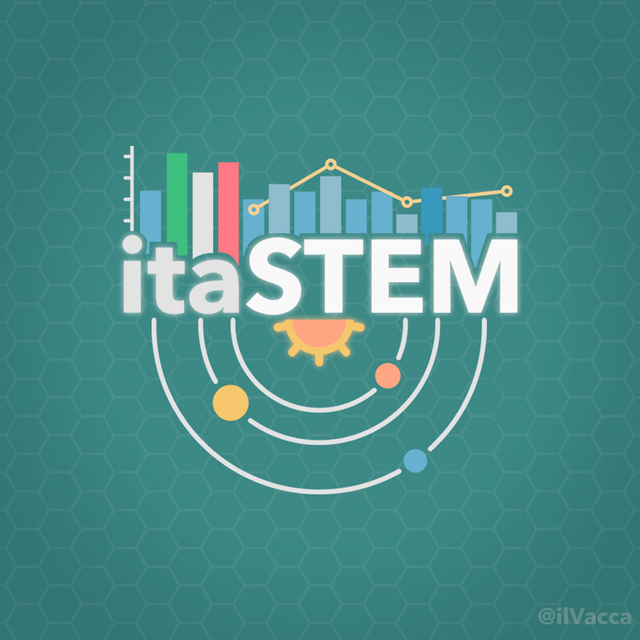
Logo creato da @ilvacca
Bien interesante saber mas acerca de los productos de consumo masivo y sopesar bien las verdades o mentiras que nos quieren hacer creer.Tengamos la duda razonable.Gracias saludos con cariño.
OMG thank you for spreading the truth! So little is known about this to society. The only think I make sure to buy that is Soy based is candles as I don't like breathing in the chemicals that other candles are made of.
Unfortunately, fashions often cloud the truth nowadays. But... Soy based candles? I have to try them!
Oh they are just as yummy spelling as the chemical made ones.
Interesting one @spaghettiscience
Well, soy is the only plant which have almost all the protein you are going to get from meat and contains vitamin too.
Cheers
This is true, but we must spread also the less healthy aspects, or people will never have a complete vision ... Soy, like all other things, is not just bad and is not just good...